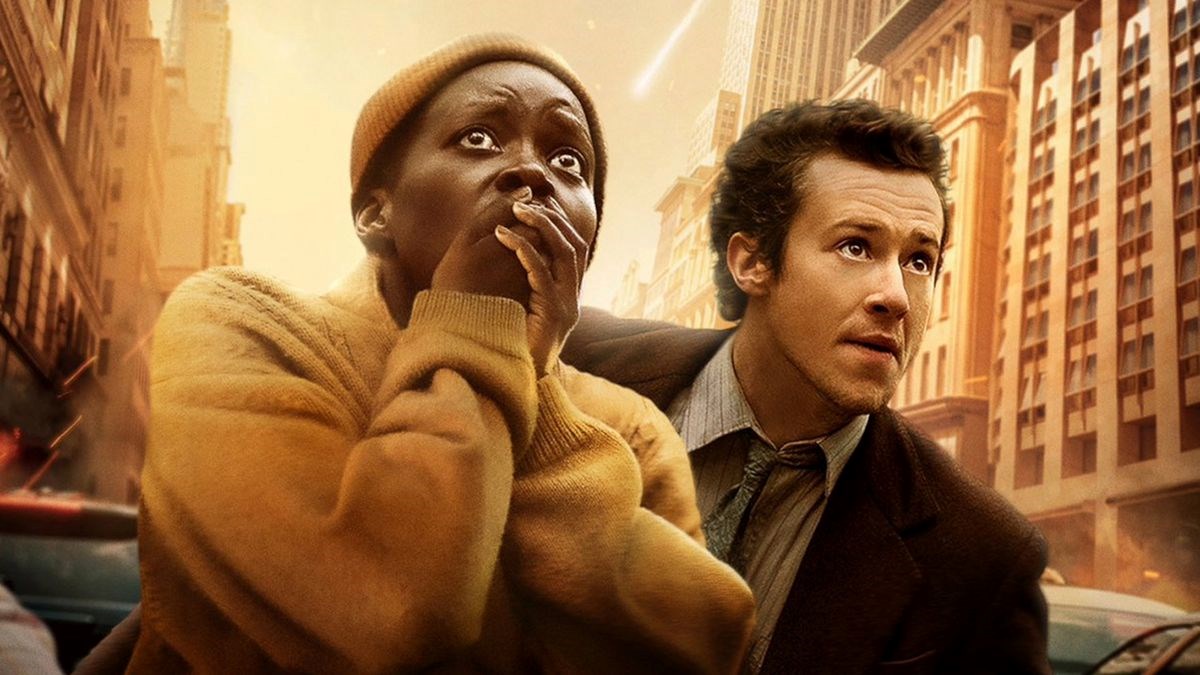It’s a silent nightmare in New York when monsters appear and ravage the world – but it’s an exciting ride when it’s back on the big screen.
White knuckle thrills abound in A Quiet Place: Day One, the new horror adventure from Paramount that’s infinitely stronger than a franchise spin-off movie has any business being.
That’s thanks to two luminous, dedicated talents: the first is writer and director Sarnoski, taking over from A Quiet Place franchise creator John Krasinski (who, in a funny contrast, made the family film IF this year instead), and the other is Oscar winner Lupita Nyong’o as Sam, the woman on a quest for pizza and a happy memory.
Instead of following the main cast from the popular 2018 and 2021 films, Nyong’o leads a smaller scale quest looking at Sam, a dying cancer patient, who unluckily gets trapped in Manhattan on the titular “Day One” when the auditory alien monsters arrive and begin an apocalyptic takeover of Earth.
(For those unfamiliar: the monsters from the films are an unknown species of predators who eat humans, but they’re blind and can only detect prey if they make sound.)
Audiences saw a small taste of that day in the prologue for 2021’s Part II, but that was in a small, midwest town. But this time it’s the millions of people in New York all being threatened at once, and some of the chases and crowd-crashing scenes are scarily tight.
Sarnoski’s eye for terrorizing vignettes and setting up smart, scary obstacles for Sam throughout the city is endlessly creative and exciting. Crashed subways, abandoned buildings, power outages and some wild weather all pose scary, sound-like obstacles that’s more gripping than the last.
The real standout is Nyong’o, who almost never leaves the screen throughout the 90-minute film. Her conviction and fear are so palpable and engaging that audiences can’t help but get invested in Sam’s survival.
A premise of Sam wanting one last moment of peace before either the aliens or her cancer gets her may sound like too simple a premise. Under the careful nuance of Sarnoski’s direction, the team has made both a bright and bleak thriller that’s great summer entertainment.
What’s most compelling in the script are the moments when, despite the disaster, Sam (and her scene-stealing cat Frodo) is appreciating the small signs of life in the desolate city. Even though things literally couldn’t be worse, somehow Sam still has some small hope left.
Audiences will gasp and jump at this latest silent screamer, and if the quality control is this good, there will likely be more quiet places to find even after three movies. I’m certainly excited for what this world brings next.
A Quiet Place: Day One
8 out of 10
Rated PG, 1 hour, 36 minutes. Horror Adventure Thriller.
Written and directed by Michael Sarnoski.
Starring Lupita Nyong’o, Jospeh Quinn, Alex Wolff, Djimon Hounsou and Frodo the cat.
Now Playing at Cineplex theatres.






























